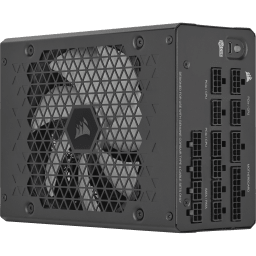BLOG
TDP Explained: Does Thermal Design Power tell the whole story?
Whenever a new GPU or CPU is announced, the first spec that every consumer, journalist, and indeed company flocks to is the TDP, or Thermal Design Power. As with many things when it comes to PC gaming, the meaning of TDP is not particularly easily understood. So, lets understand it a bit better now.
What is TDP?
Thermal Design Power, or TDP is measured in watts and “refers to the power consumption under the maximum theoretical load.” This makes TDP a spuriously accurate shorthand for assessing the actual capability of the component (usually a CPU, but not always).
In the context of PCs, this is why TDP is used to calculate what PSU you’d need for a given hardware combination.
However, there are other definitions of TDP, some say that “Thermal design power, also known as thermal design point, is defined as the theoretical maximum amount of heat generated by a CPU or GPU that its cooling system is designed to dissipate.”
That’s odd right? These sound like two entirely different things measured by the same metric, and that is sort of correct, but these two different things are intertwined.
This is because the more power a component consumes, the more heat it will generate, so the two different definitions of TDP are basically looking at the same thing but from opposite perspectives.

The RM1200x SHIFT is capable of providing up to 1200W of power for example. So if the TDP of all your PC components adds up to 1200W or less, this would be a capable PSU.
Is TDP relevant in day-to-day use?
However, it is vital to remember that the TDP of the CPU or GPU that you’re looking at is the maximum that it can hit. The sort of thing synthetic benchmarks like FurMark, Cinebench, and AIDA64 are designed to reach.
So, if you’re concerned that a CPU with a TDP of 270W will be sucking down 270W constantly for the entire period that the PC is turned on, rest assured that this is almost never the case. Real world uses like watching YouTube videos or browsing Reddit do not require your hardware to work as hard as possible and therefore hit its TDP.
Even doing things that are considered “hard work” for your hardware like gaming, will very rarely hit that maximum.
Can I ignore the TDP?
So, why not reject the TDP entirely and just down spec your PSU according to a more realistic amount of power consumption?
It’s tempting, but this is not recommended for a few reasons:
- Transient power spikes
- Sometimes you can actually hit that maximum TDP
- Future upgradability
Transient power spikes happen when a component occasionally and very briefly consume way more power than usual. Having a PSU that’s capable of more wattage than you need can handle these spikes more easily.
As we mentioned earlier, hitting the maximum TDP is not a common occurrence, but it can still happen. After all, a PC building enthusiast will often benchmark their new build and can certainly hit these maximums.
The last reason is more of a fiscal choice, not a technical one. Choosing a PSU that’s more powerful than is necessary for your selection of components means that you’ll be able to upgrade your other components before needing a new PSU.
TL;DR
To summarise, yes, pay attention to the TDP of components you’re looking to buy, as it is valuable for helping you decide on a sufficient power supply. However, don’t think that the TDP is representative of the usual power consumption of your PC parts.
产品注册

















